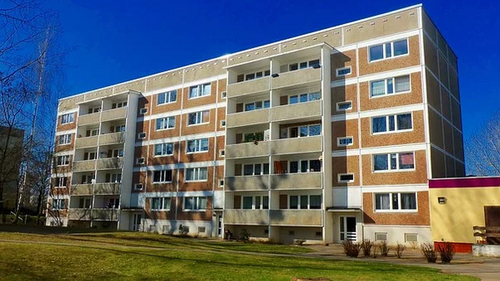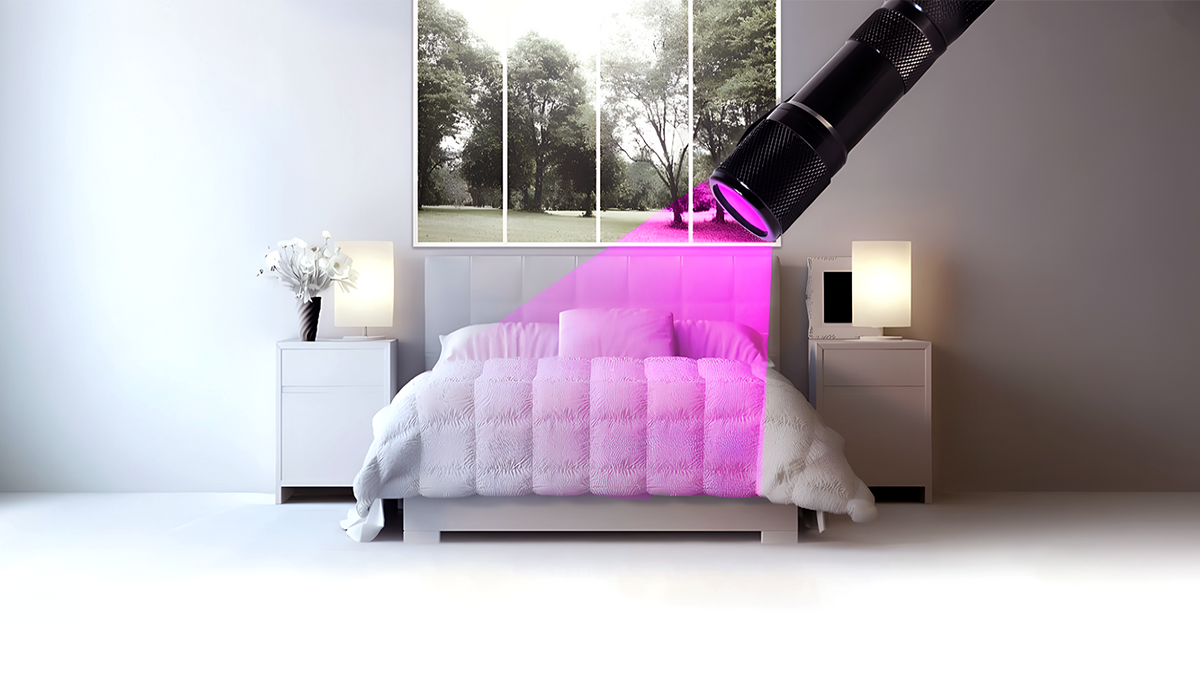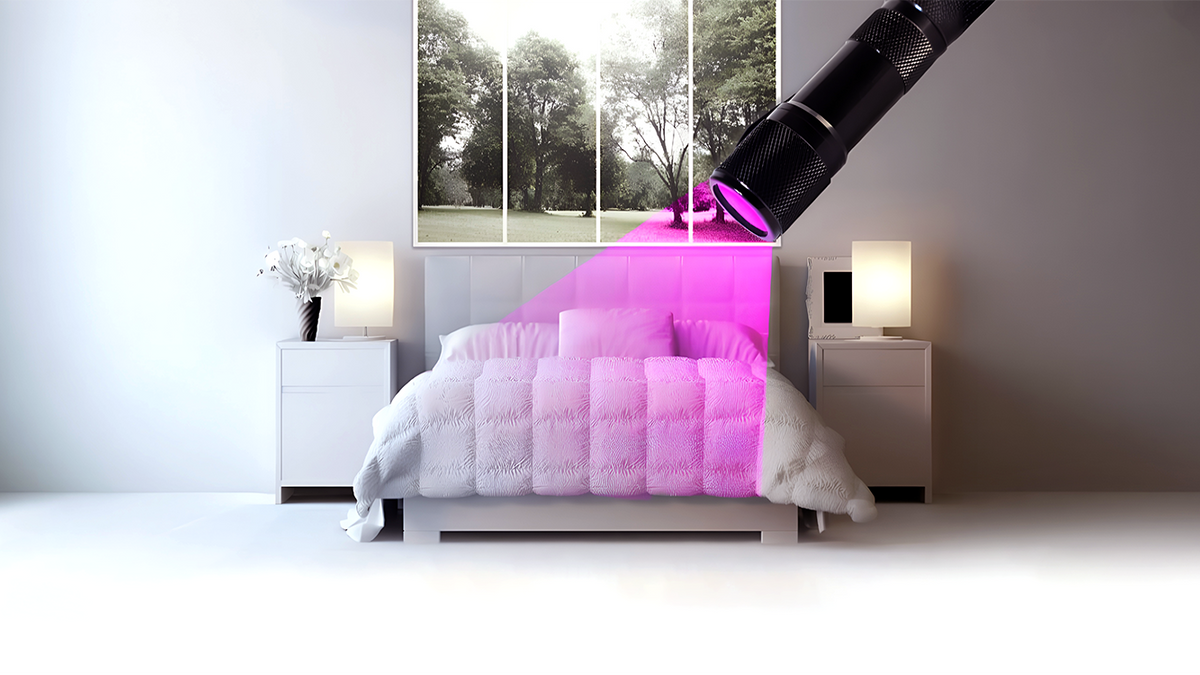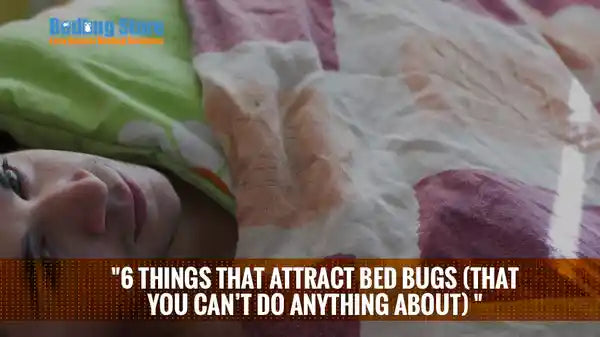Bed Bugs: An Apartment Building's Worst Nightmare
Published on November 14, 2019 by Alana Korol

How Do Bed Bugs Spread into Apartments?
When bed bugs are brought into one apartment, it doesn’t take long before they find their way around, infesting neighboring apartments. They are usually introduced into apartment buildings by sneaking into luggage that a neighbor could have used while traveling or by people moving into apartment units with infested furniture, bedding, backpacks, luggage, and more. Once inside an apartment building, the bed bugs can quickly spread from one unit to another, causing widespread infestation.
Bed bugs are flat, wingless (non-flying) insects that cannot jump but can get around quickly by crawling, between three and five feet per minute. They generally prefer natural and textured surfaces because they don’t crawl as easily on slick surfaces. Bed bugs hide behind cracks and crevices in walls and crawl onto headboards and mattresses. They also make their way onto beds by crawling up the legs of bed frames and crawling up to bed skirts, blankets, or any other bedding that touches the floor.

Why Do Bed Bugs Spread So Fast in Apartments?
Studies have shown that nearly half of the residents living in apartment dwellings know they have bed bugs. However, all too often, many people are afraid to speak up and say that they are dealing with an infestation of bed bugs for fear of embarrassment. After all, it’s understandable that poor cleaning habits are typically associated with an infestation of pests.
This is highly counter-intuitive because not reporting the problem worsens the infestation, and getting rid of the bed bugs is nearly impossible as they have ample time to find new places to hide and reproduce. Not to mention that bed bugs aren’t exactly picky when it comes to the cleanliness of their environment. Clutter certainly makes it easier for them to hide, but having an infestation of bed bugs is not as simple as how tidy your home is.
What Should I Do If I Suspect or Find Bed Bugs in My Apartment?
Suppose you live in an apartment building and suspect you have bed bugs. In that case, you should immediately inform the apartment manager. Adjacent units must be inspected for infestation and treated to get control of and eradicate the bugs.
Choosing an effective and safe treatment should be a priority. The last thing you want is to use a method or product full of harsh or toxic chemicals that could keep you from enjoying your home comfortably.
How to Get Rid of Bed Bugs - Do It Yourself (D.I.Y) Bed Bug Treatment
Some apartment building owners clarify that pest control is the renter's responsibility. You do have options, however, when it comes to treating your home safely and naturally!
First, we know that bed bugs are excellent at hiding, and most people don't realize they have them until they start seeing mysterious bites on their bodies. If you do notice you have bites, the first thing you should do is look for signs of bed bugs to be sure that bed bugs caused your bites.
How to Detect Signs of Bed Bugs
The first thing you want to do is pull back your bedding and look for signs of bed bugs on your sheets, mattress, and box spring. Check your mattress to see if it is dotted with dark, reddish spots or smears. There may also be molted bed bug skins and a sweet odor emanating from your mattress. If you can identify these signs, you have bed bugs.
DIY Bed Bug Treatment
Professional bed bug treatment can be costly, and many people cannot afford to hire a professional. They will look to get rid of bed bugs on their own. Depending on the extent of the infestation, more than a single attempt may be required to complete the job.
Once you have identified bed bugs in your bedroom, you will want to determine if other rooms are infested. Check all the furniture, especially upholstered furniture, in all rooms. This includes sofas, chairs, throw pillows, etc.
Here are some tips to treating bed bugs:
1. Bag all items
To prevent cross-contamination and bed bugs from escaping and spreading to another room, throw all bedding, clothing, and any washable items into plastic bags or containers with a tight seal. If using plastic bags, make sure you double-bag all items. Store bags and containers in the laundry room or garage until you can wash them.
2. Wash and Launder
Wash all bedding and other washable items, such as stuffed toys, animal bedding, blankets, etc., in hot water at a temperature of at least 120 degrees, including plenty of detergents. A typical household washer and dryer setting is usually hot enough to kill bed bugs. Be sure to dry your bedding using your dryer's highest heat setting. Bed bugs cannot survive in a hot dryer for over 30 minutes.If you have any items that aren't washable, heating items such as throw pillows in the dryer may do the trick. Be sure to discard all bags outside your home once items have been laundered to prevent any bed bugs in the bags from spreading.
3. Vacuum
Thoroughly vacuum all infested areas, such as box springs, mattresses, headboards, bed seams, baseboards, furniture, carpeting, rugs, etc. You'll want to thoroughly vacuum all cracks and crevices where bed bugs and their eggs hide. Immediately dispose of the vacuum bag in the outside trash after vacuuming bed bugs.
4. Seal Your Mattress
Once you have thoroughly vacuumed your bed, you'll want a good bed bug-proof encasement set for your mattress and box spring. These prevent bed bugs from being able to hide and make nests in your mattress and trap bed bugs inside the mattress and box spring, preventing them from escaping and biting you.
5. Scrub and Spray
Scrub down the headboard, bedpost, bed frame, baseboards, floors, and drawers with a good scrub brush or disposable rags. Spray all surfaces with our all-natural Bed Bug Patrol Killer Spray and Dust all the cracks and crevices of furniture, walls, and floors.
6. Follow Up
Because bed bugs are so good at hiding, you'll want to install Bed Bug Traps on the feet of any furniture, including your bed, to monitor for any remaining bed bugs. If bed bugs remain, repeat these steps until you are sure you don't have any bed bugs left.
Talk to Your Neighbors About Bed Bug Patrol Treatment
As tough as it may be, we cannot stress how important it is to talk with your neighbors about the potential spread of bed bugs. This can save time, stress, money, and embarrassment if a treatment plan is set in place as soon as bed bugs are discovered. The sooner you begin treatment, the sooner you can reclaim and enjoy your home again!
Our natural, plant-based Bed Bug Patrol Killer Spray provides an all-natural solution to infestations of bed bugs, as well as fleas, spiders, and other common indoor bugs. Our 100% natural solution is made in the USA. It relies on the power of natural ingredients like citric acid, clove oil, and peppermint oil to naturally deter these bugs from living in your furnishings and upholstery. Just spray our solution on affected surfaces twice per day, and it will get to work on exterminating your bed bugs and preventing their return. To keep you safe from bed bugs on your travels, arm yourself with our Bed Bug Blasting Travel Spray, which comes in a handy, TSA-approved travel-size bottle for your convenience.




